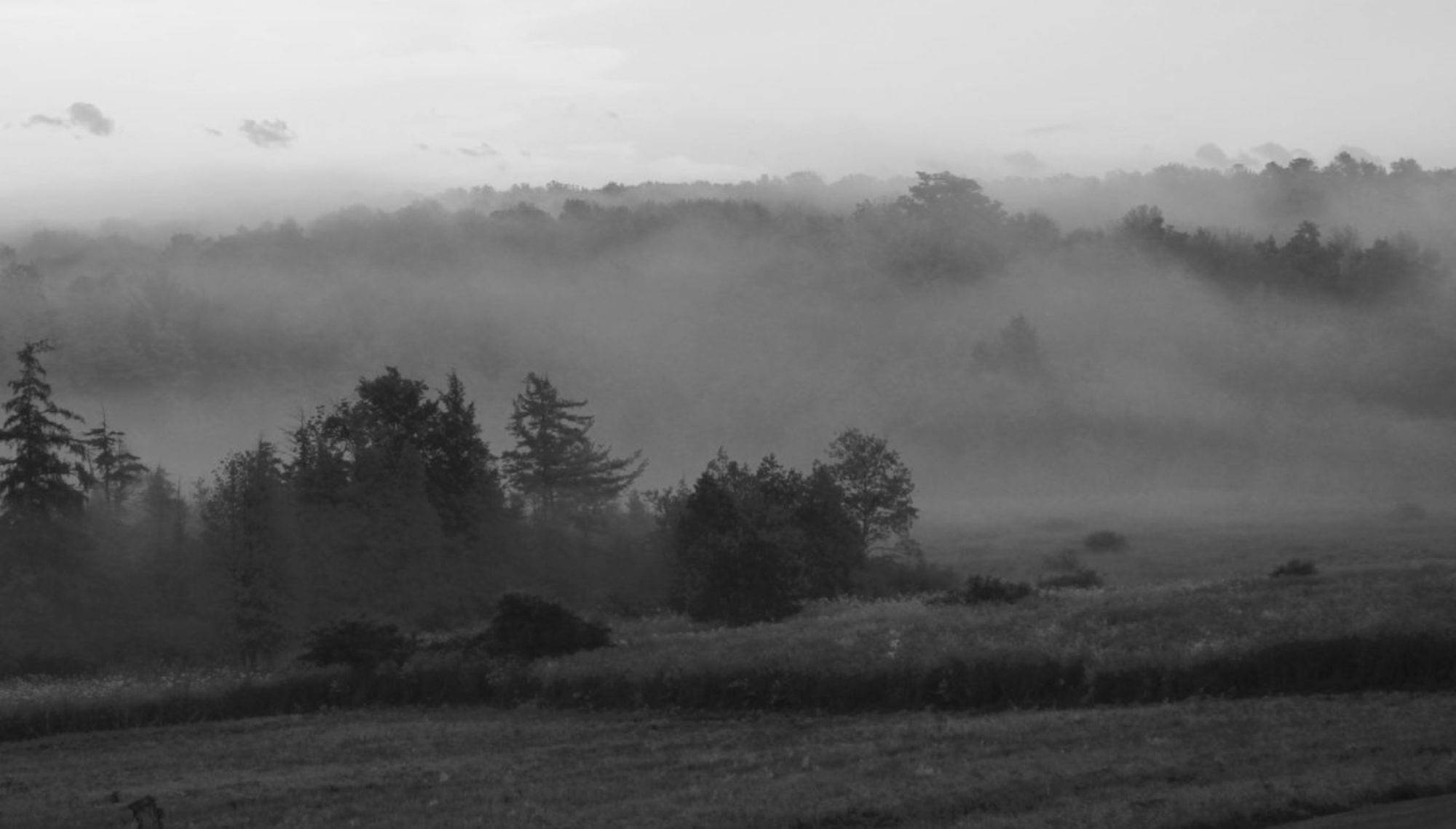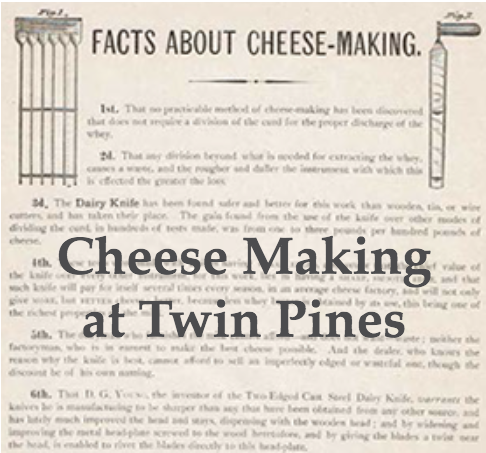Cheese Making at Twin Pines Farm
New York State in 19th Century

D.G. Young’s Fact Sheet & Cheese Knife
My great great grandfather, Deacon Golden (D.G.) Young was part of a group of cheese makers in the mid-1800s who made the famous “Herkimer County Cheese”. Having patented a cheese-making knife that separated the curd, D.G. traveled throughout New England and as far west as Ohio to promote his knives, as well as make cheese on Twin Pines Farm. In the lithograph in my book, The Well, the cheese house is visible in the background behind the farmhouse.
According to historian Eunice Stamm who wrote The History of Cheese Making in New York State (1991), “On January 6, 1864, a group of dairymen, cheese-makers and manufacturers assembled at the Courthouse in Rome, NY. Led by Jesse Williams (who established the first cheese factory in 1851), they formed an association for the purposes of upgrading cheese making and promoting the welfare of dairymen.”
In the 19th century, Herkimer County was the cheese-making center of the United States. The art of cheese making was brought to this country by the Palatine Germans, but was quickly adopted by all the settlers. In 1851, one of Herkimer County’s cheese makers entered some cheeses in the Crystal Palace Exhibition in London, England. In a few weeks, word came back that the cheese had won first place! Also, one of the first international uses of the telegraph for commercial purposes was to send prices at the Herkimer Cheese market.
Statistics show that from 1870 to 1877, over two million pounds of cheese were produced in one farm alone. From 1864 to 1870, Herkimer County (where Twin Pines Farm is located) was the largest cheese market in the world. Buyers came from all over on market day. In an average season, 25 to 30 million pounds of cheese were sold in Herkimer County, and then shipped all over the world. The practice continued into the 20th century.
Herkimer County’s claim to fame in the 19th century centered on the cheese business. At weekly open-air markets usually held on Mondays, the haggling over prices took place with many dealers present. These markets set the national and international cheese prices in the third quarter of the century.
Herkimer County developed a type of farm with diversified crops like wheat, barley, and peas, their principal agricultural exports circa 1800. Adverse weather conditions and newly available canal transportation brought radical change to this farming region in the following decade. The old Erie Canal brought western New York State grains to Albany and New England two weeks before the local crops were ready to harvest. Cheap western land and a higher annual yield resulted in a business with which New York farmers could not compete. Many families experienced financial ruin. 1816, the year with devastating weather conditions and no summer, brought blizzards in July which destroyed the traditional crops. Grass was the only successful crop of the season. Farmers who turned to grazing and the butter and cheese business found it lucrative in most instances. This was the case with my great, great grandparents, in addition to producing the milk for the cheese and the grain for the dairy.


